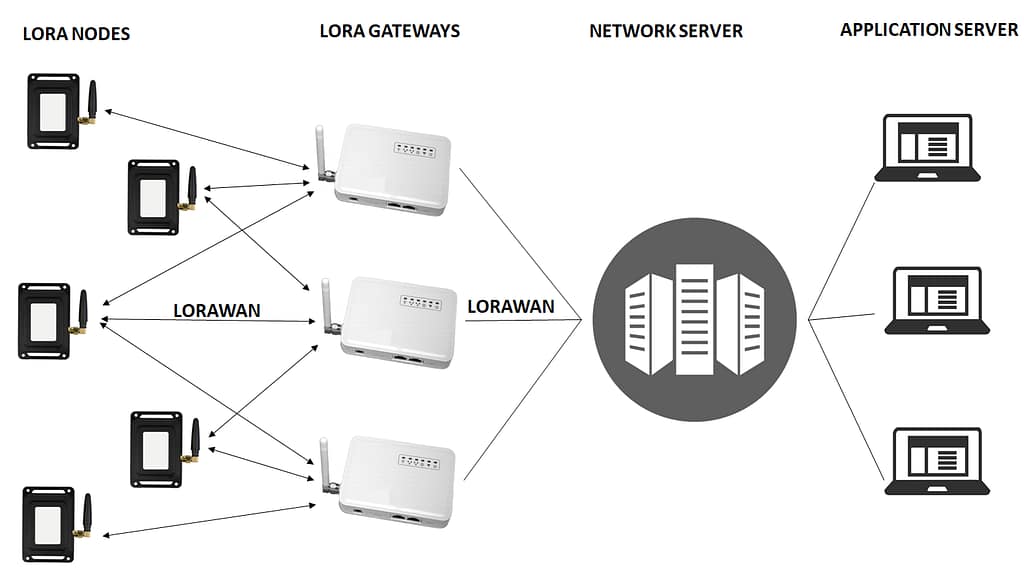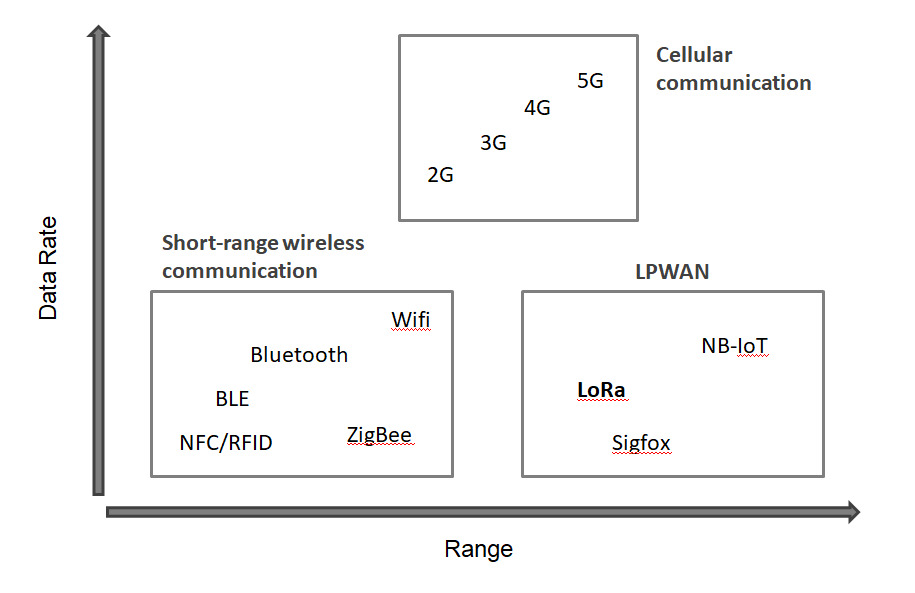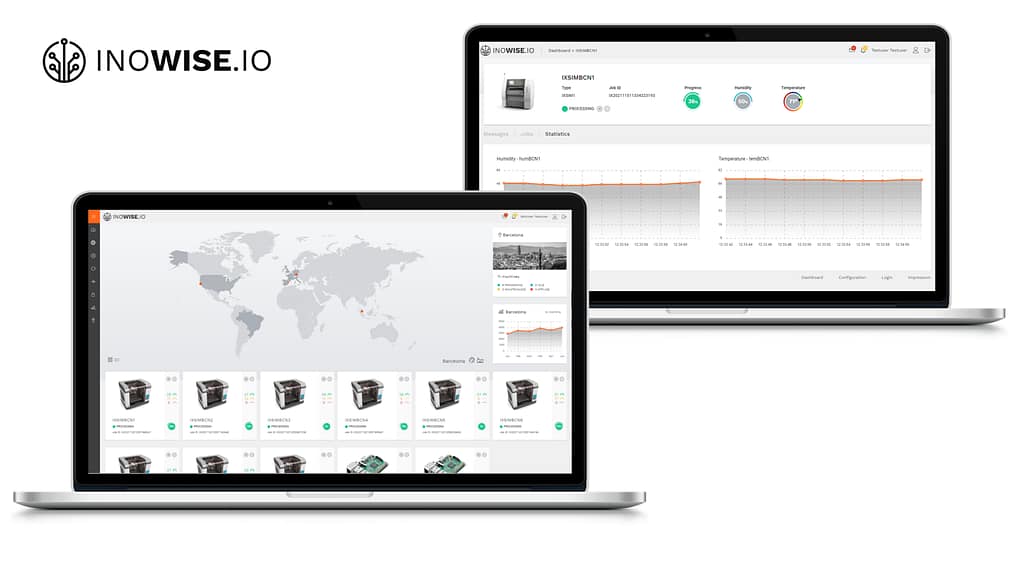
Choosing the right transmission protocol for your IIoT solution – a big decision
You are familiar Wide Area Network technology like the cellular 4G and 5G which allow data transmission over long distances. However, these technologies consume a lot of power. Just think of how often you charge your mobile phone.
Cellular technologies can transmit large amounts of data at high speed over long but this involves very high power consumption.
Now think of an IoT solution that uses sensors spread over a few kilometers. Those sensors operate on batteries and transmit sensor values a few times every hour. The data transmitted is small and sporadic. So we need a wireless network that consumes very low power and operates over large distances but it does not necessarily have to be a high speed connection that is able to transmit large amount of data like the aforementioned cellular technologies.
This is were LoRa enters the game. LoRa is owned by Semtech and stands for Long Range.
What is LoRa?
First, it is to know that there is LoRa and there is LoRaWAN. LoRa deals with only the physical layer of the stack (that is, the hardware). The technology enables low power long-range transmission over the unlicensed ISM band. Semtech has licensed the LoRa technology to vendors who produce LoRa devices.
LoRaWAN, on the other hand, is a communication protocol that operates over the unlicensed ISM band in sub-Giga Hertz frequency. This means that you do not need any license to transmit data. The actual frequency of this sub-Giga Hertz ISM band for LoRa varies from country to country.
Here you can find out what the frequency band in which LoRa network operates in your country: https://www.thethingsnetwork.org/docs/lorawan/frequencies-by-country.html
In a LoRaWAN network, we find LoRa nodes and LoRa gateways. LoRa nodes are devices with LoRa radio modulation capability that includes sensors and micro controllers. The LoRa nodes typically run on batteries that are expected to run for several years.
Several LoRa nodes connect to LoRa gateways, which channel the data from the nodes to a network server and from there the data is moved to a variety of application servers.
The communication between the gateway and the nodes is bidirectional, so that we can also get the nodes to perform some actuations like turning on some status lights and so on. Each node can transmit to multiple gateways and the network server removes the duplicates and forwards the appropriate data from the node to the correct application server.

Lora vs. other technologies
The LoRa bit rate is quite low but it has a very large transmission range and much lower transmission power compared to other technologies (see graphic below).

LoRa vs. Sigfox vs. NB IoT
LoRa, NB-IOT (Narrowband IOT) and Sigfox, are all low-power, wide-area network (LPWAN) technologies. For years, Sigfox and LoRa were the major competitors in the LPWAN, however, Sigfox’s (a french company) network performance is not as good in the US as it is in Europe and since new competitors like NB IoT have entered the marked, Sigfox seems to be struggling.
Nevertheless, each technology has its benefits depending on the use case.
The advantages of NB-IoT are:
- Excellent coverage: NB-IoT devices rely on 4G coverage, so they would work well indoors and in dense urban areas.
- Faster response times than LoRa and better quality of service.
- NB-IoT addresses the needs of very low data rate devices that need to connect to mobile networks, often powered by batteries
The advantages of Sigfox are:
- Sigfox has the lowest cost radio modules (<$5, compared to ~$10 for LoRa and $12 for NB-IOT).
- It consumes a low amount of power.
- It works well for simple devices that transmit infrequently, because it sends very small amounts of data very slowly.
- It supports a wide coverage area in the areas where it is located.
The main benefits of LoRaWAN are
- It is perfect for single-building applications.
- You can set up and manage your own network.
- LoRa is a good option if you need bidirectionality, for example, command-and-control functionality, because of the symmetric link.
- LoRa devices work well when they are in motion, which makes them perfect for shipments.
- LoRa devices have longer battery life than NB-IoT devices.
LoRa and Inovum
Inovum forms part of The Things Network an important member of the LoRa Alliance. The LoRa Alliance is a fast growing non-profit association that has become one of the largest alliances in the technology sector.
Currently, there are almost 17.000 LoRa gateways up and running, 24 of them in the city of Barcelona. A map with all gateways worldwide can be viewed here: https://www.thethingsnetwork.org/map
Inowise.io – a Next-Gen Asset Management Solution
Inovum has developed Inowise.io a smart industrial machine management platform that uses LoRa to easily access, visualize and control machines remotely.
Inowise.io collects data through a combination of sensors that measure factors like humidity, temperature, vibration, CO2 concentration, force, activity, pressure, acoustic emissions, material thickness, voltage, motor condition, etc. and other devices like GPS trackers and cameras.
Data analytics, artificial intelligence and predictive maintenance help prevent asset failure, minimize downtime, minimize the environmental impact, reduce waste, minimize safety risks, save costs and give the customer a considerable competitive advantage.

Comments are closed.